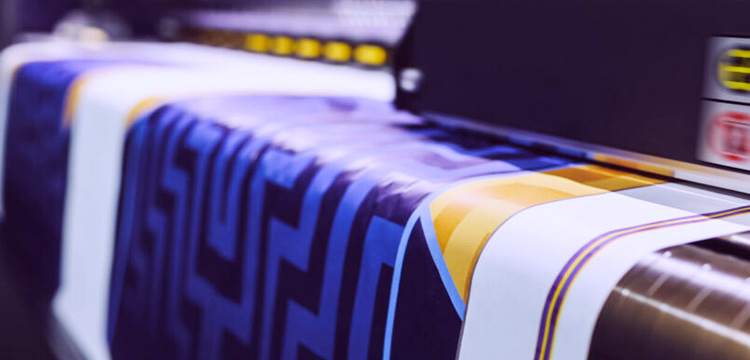What is heat transfer printing technology
The most commonly used method for heat transfer printing is sublimation, which utilizes the sublimation properties of dispersed dyes to transfer and fix them onto synthetic fibers such as polyester under high temperature conditions.
The specific process is to print the pattern onto paper using a roller or flat screen after plate making, or a circular screen printing machine with dispersed dyes or inks. The transfer printing paper with printed patterns will be combined with the fabric through a transfer printing machine under suitable temperature and pressure conditions. Through physical and chemical reactions, the patterns on the paper will be instantly sublimated and transferred to the surface of the fabric, while diffusing and penetrating into the inner layer of the fibers for fixation. This is the current process of heat transfer printing on polyester fabrics.
1 Transfer printing temperature
The temperature depends on factors such as the optimal temperature for dye sublimation dyeing, fiber heat resistance, and heat transfer time.
The sublimation temperature of dispersed dyes used in heat transfer printing should be lower than the melting point of fiber macromolecules and not damage the fabric strength. The suitable processing temperature for polyester is 180-210 ℃. Within this temperature range, the molecular weight of dye sublimation varieties is between 230 and 270.
2 Transfer printing pressure
Flat press: With a transfer pressure of 10kPa as the standard, if the pressure is insufficient, the fit between the transfer paper and the printed fabric will not be tight enough, resulting in uneven patterns and unclear colors; On the contrary, if the pressure is too high, the feel and style of the printed fabric will also change.
Roller transfer printing machine: In order to achieve a tight overlap between the transfer paper and the printed fabric, the blanket must be tightly wrapped around the surface of the hot roller, and the appropriate pressure is generally controlled at 12kPa.
Vacuum negative pressure heat transfer machine: Under negative pressure conditions (13.3kPa), it can achieve good coloring and penetration effects, and the printed fabric has a good hand feel.
3 Transfer time
In actual processing, the transfer time is 15~45 seconds. The transfer temperature, fiber type, weave and variety of woven and knitted fabrics can all affect the transfer time.
4 Color fastness
The color fastness of transfer printed fabrics mainly depends on the following three factors: the processed fabric; The transfer paper used and the dye printed on the transfer paper; Transfer printing process conditions.

